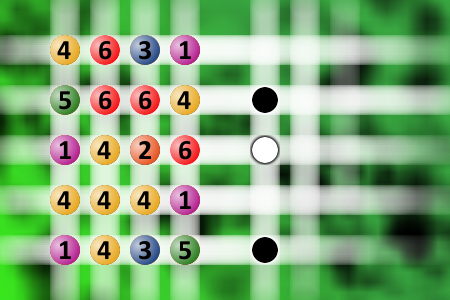What a winning combination?
The computer chose a secret code (sequence of 4 digits from 1 to 6). Your goal is to find that code. Black circles indicate the number of hits on the right spot. White circles indicate the number of hits on the wrong spot.
The Doctor Needs A Wrench
A woman with a minor injury was at the hospital because her doctor said she wanted to take a closer look at it to make sure everything was all right. The woman's husband sits patiently in the waiting room.
After a few minutes, the doctor comes out and asks her assistant for a wrench, which understandably concerns the husband.
Then, after a couple more moments, the doctor re-enters the room, this time asking for a screwdriver. The husband grows worried and begins to pace in circles. Then, a little later, the doctor bursts through the doors screaming for a hammer and at that, the husband, in a state of frenzied fear, runs up and asks, 'Doctor, what the heck is wrong with my wife?'
'I don't know,' replies the flustered doctor, 'I can't get my bag open!'

